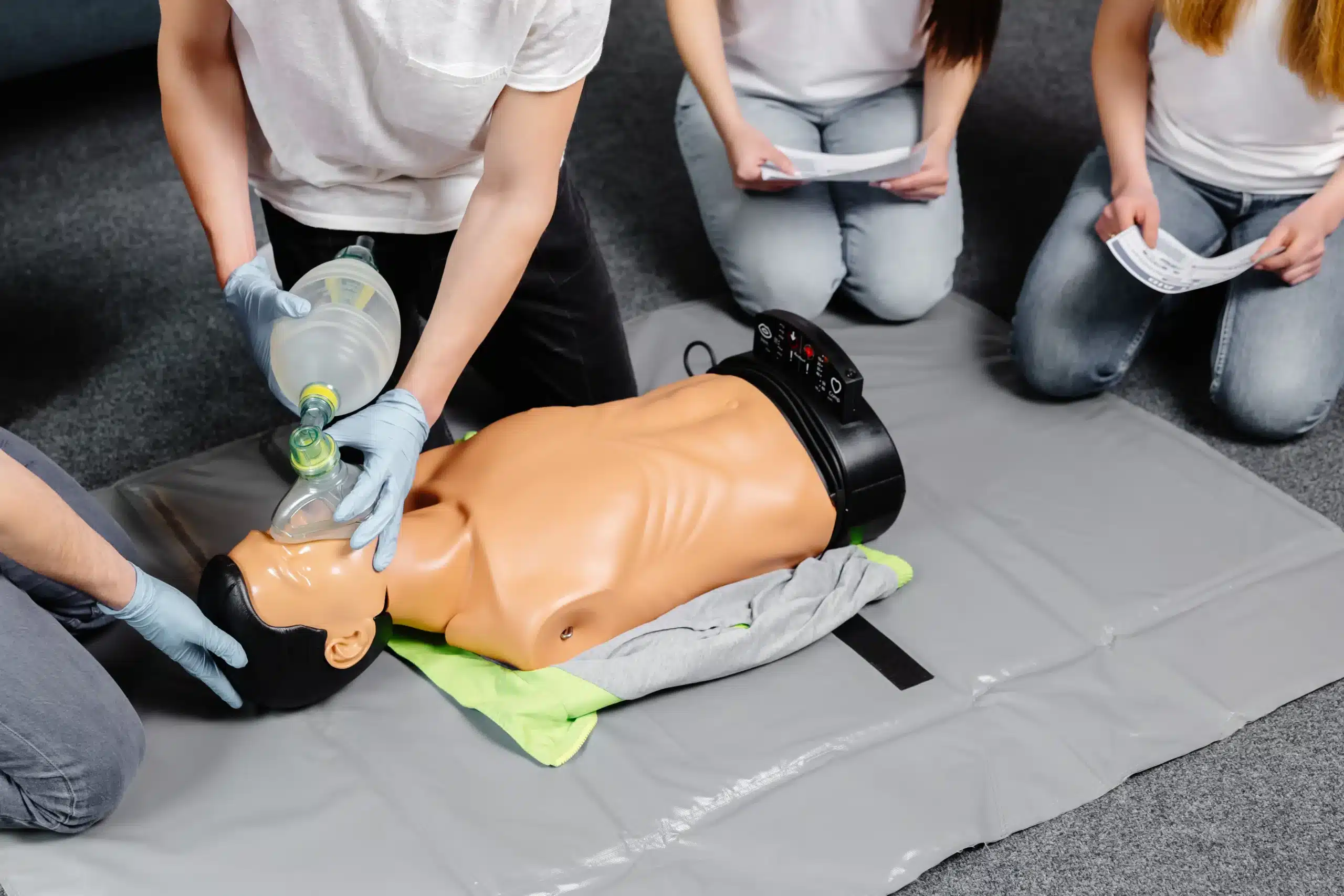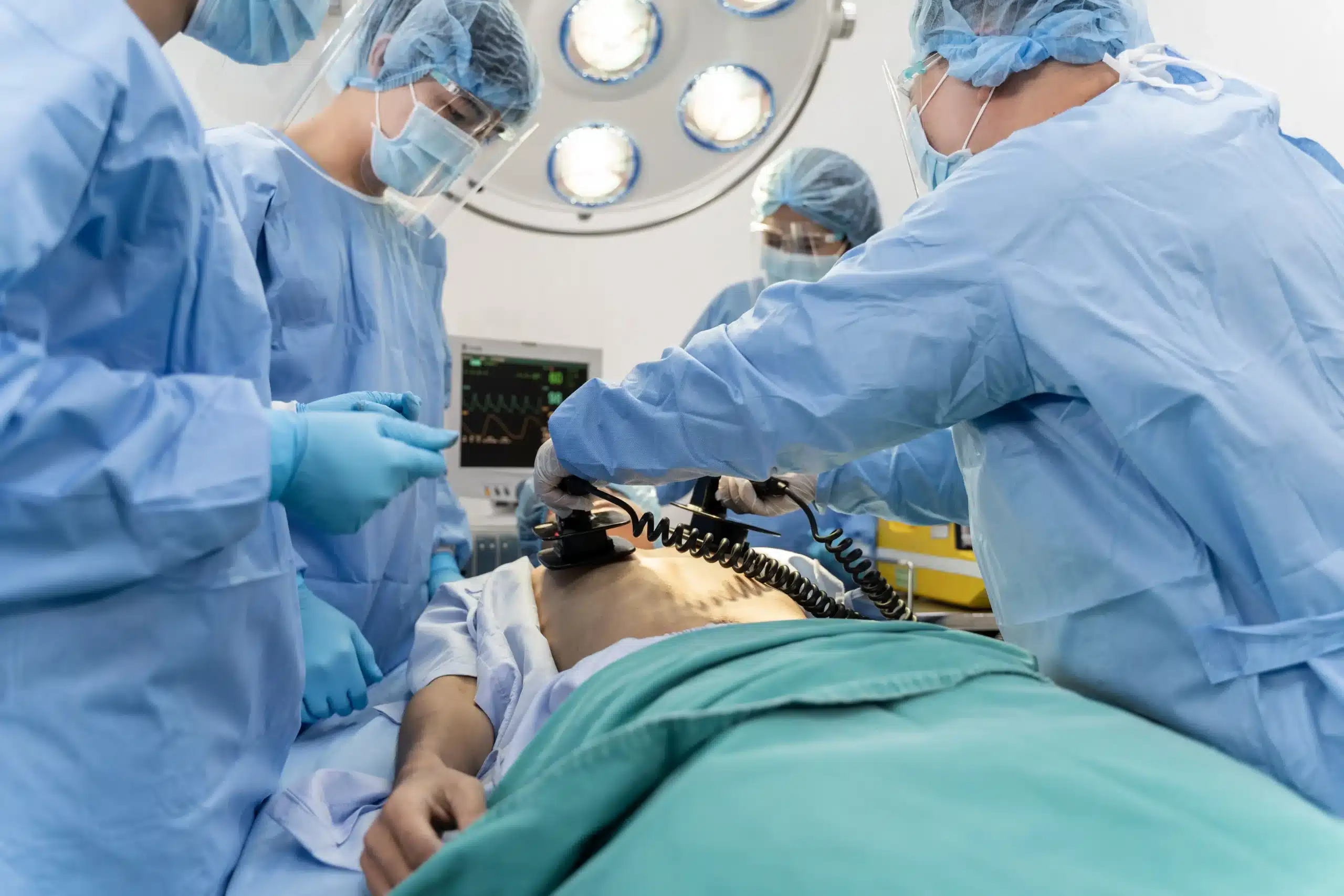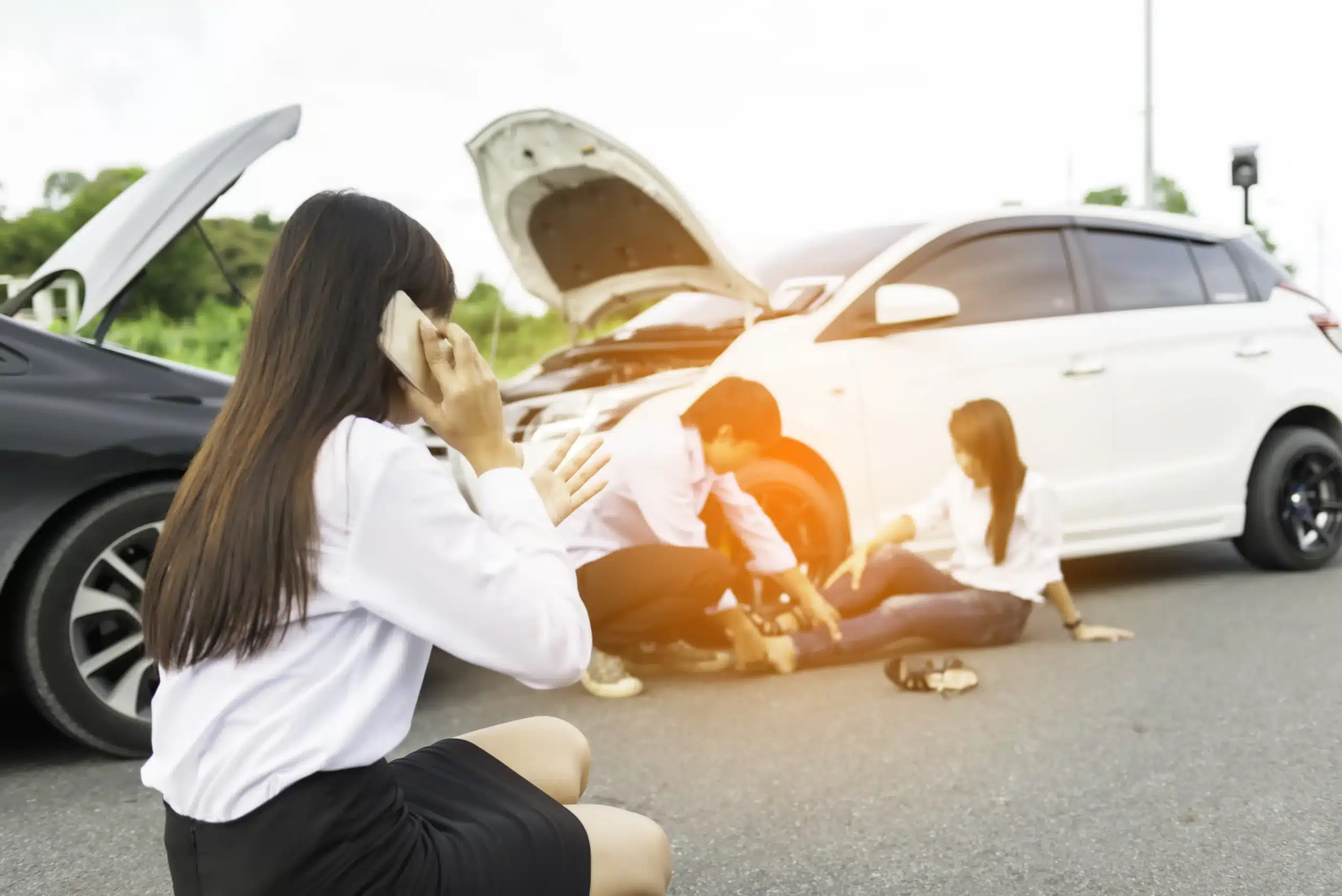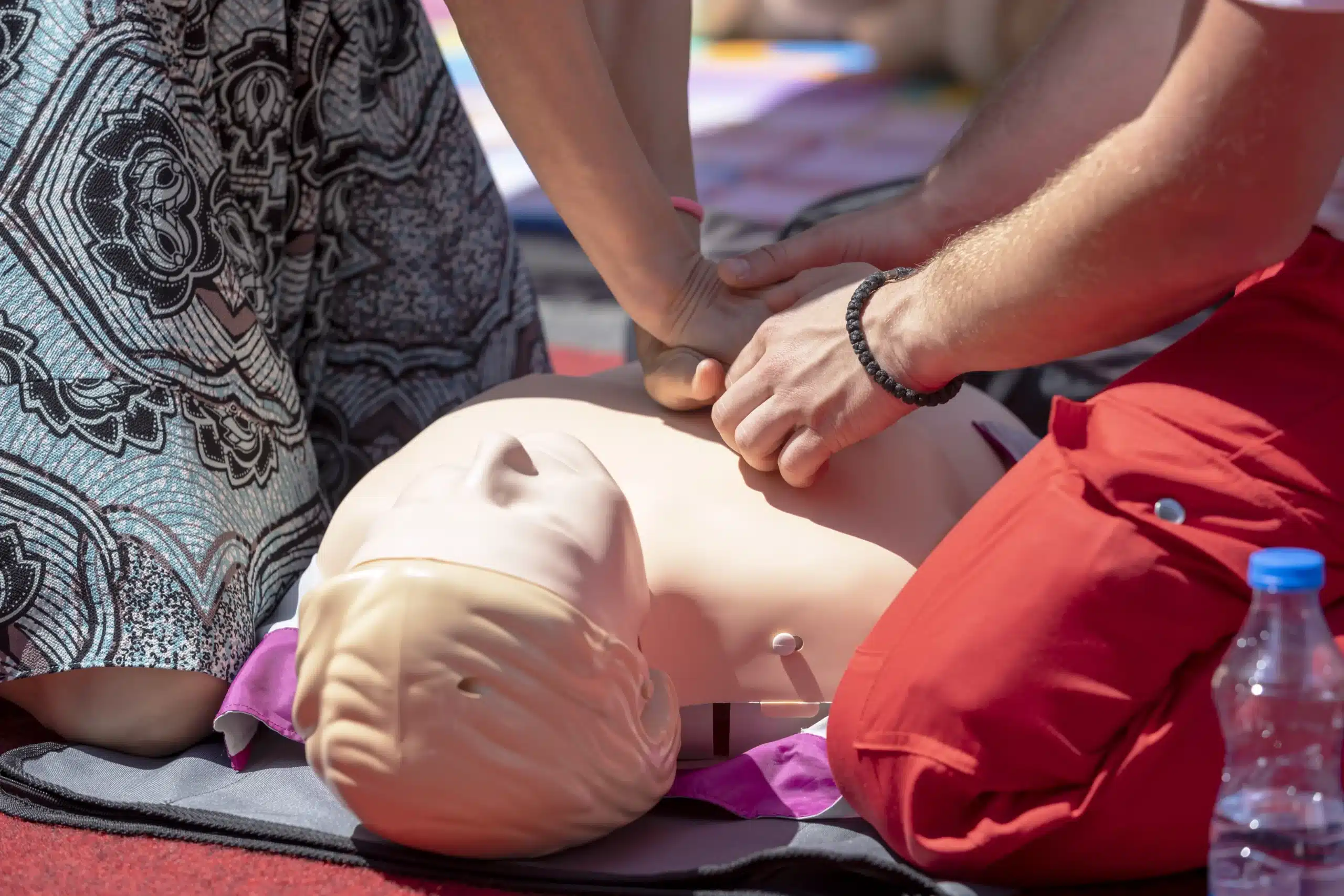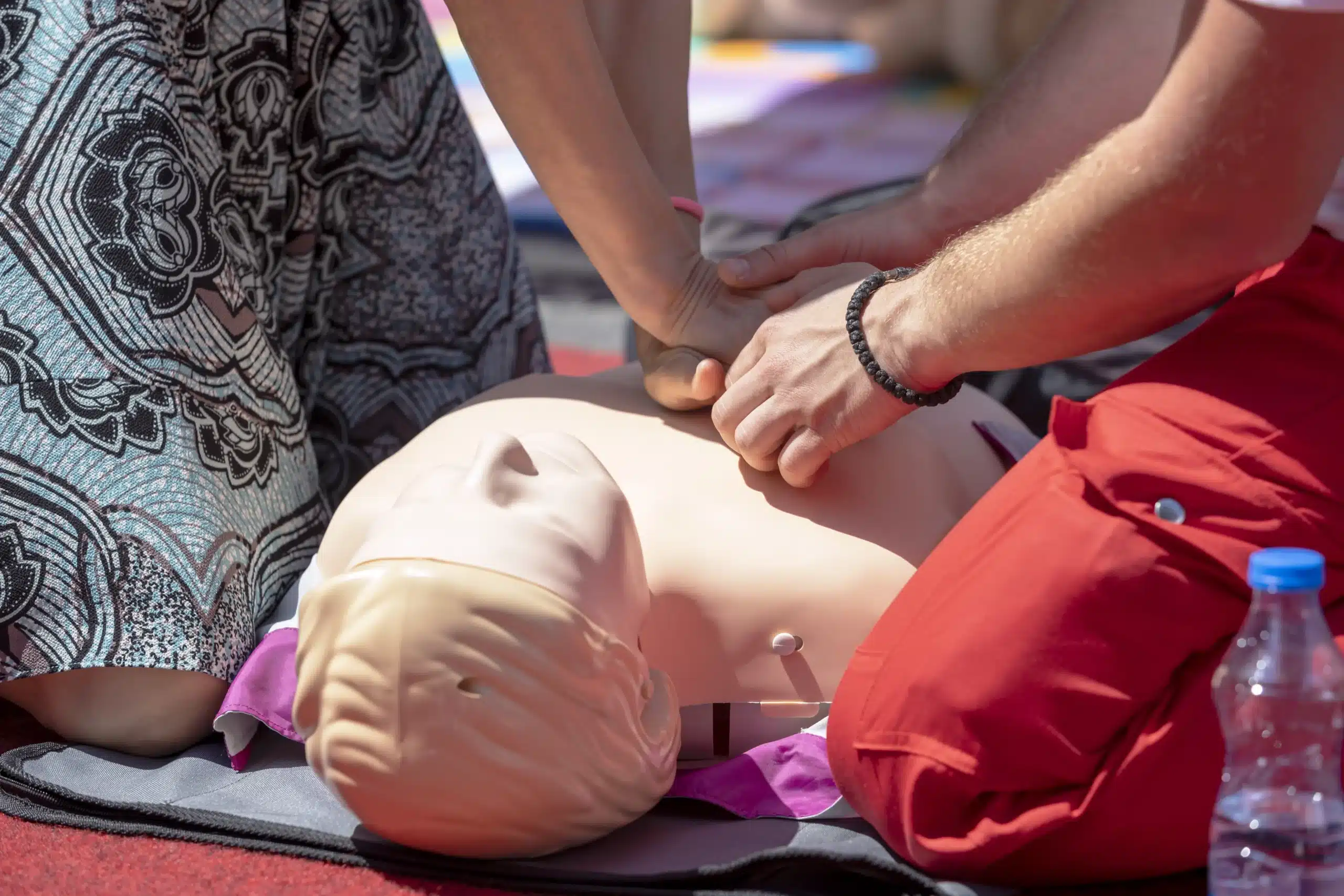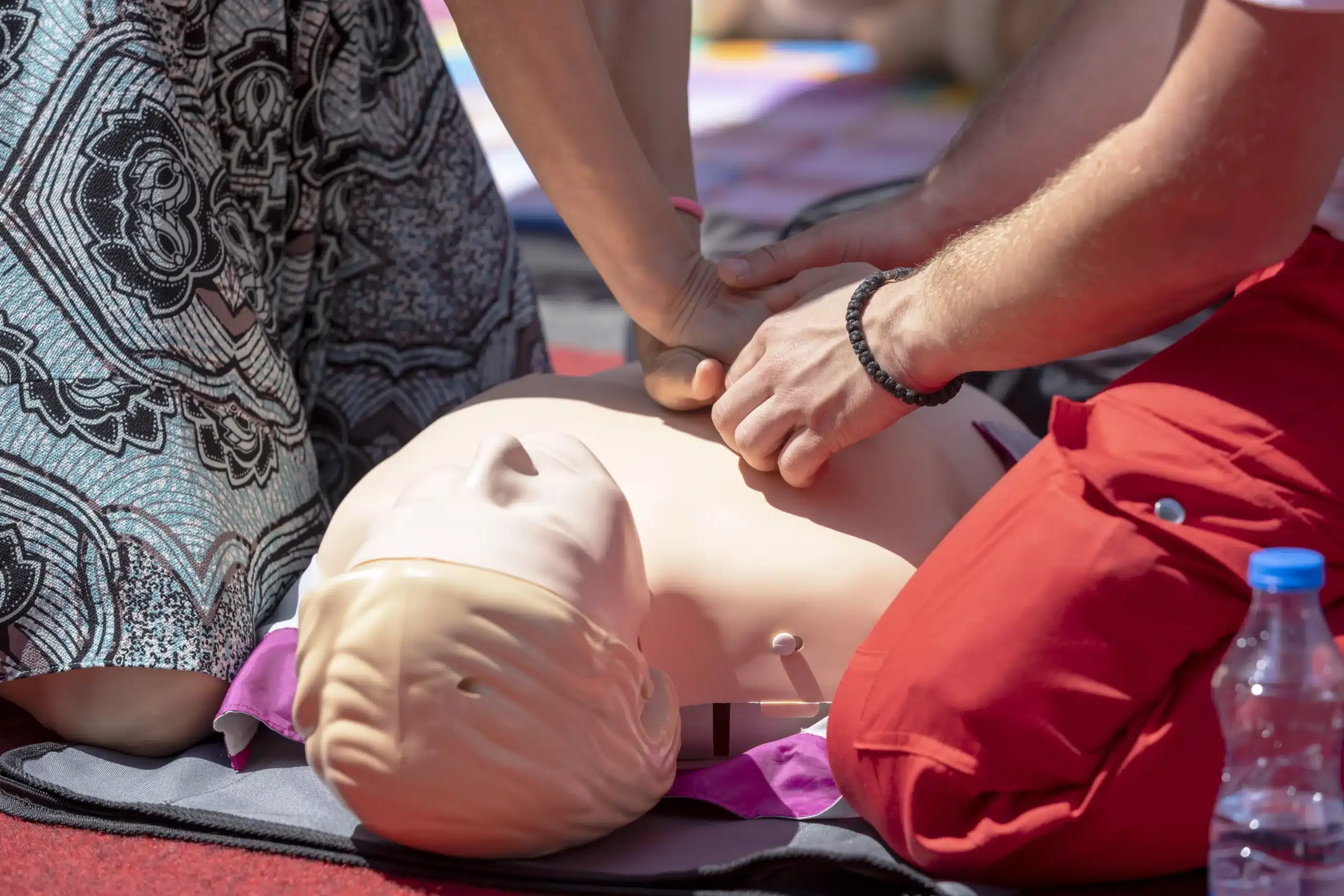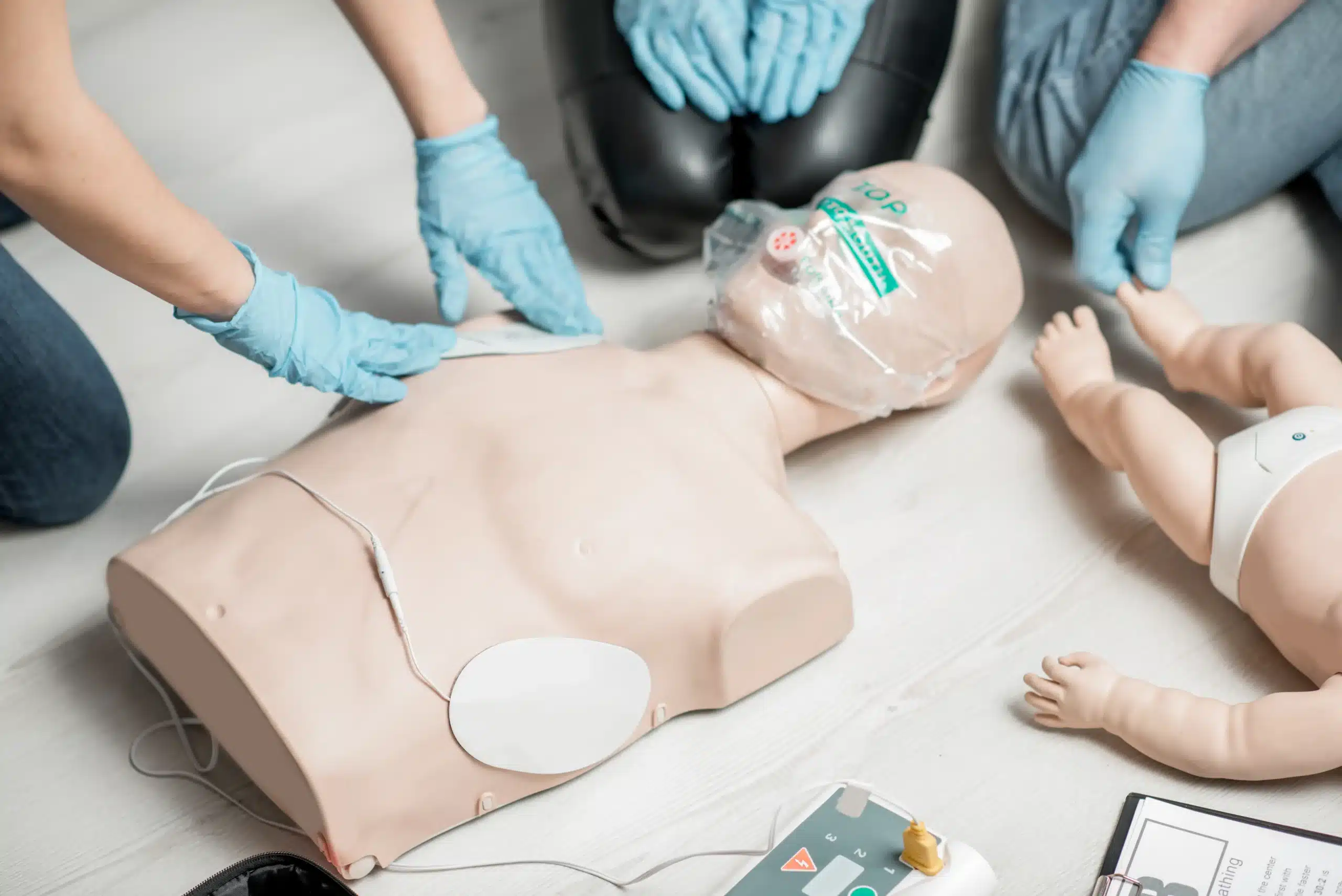Ever feel like you’d be lost in a medical emergency? Like you’d want to help but wouldn’t know how? It’s a common feeling, but one you can absolutely change. BLS certification empowers you to confidently handle those critical moments, providing essential care until professional help arrives. Whether you’re a healthcare professional, a concerned citizen, or simply someone who wants to be prepared, understanding the value of BLS can make a world of difference. This guide breaks down everything you need to know about BLS certification, from the skills you’ll gain to how it can impact your career and community. Plus, we’ll help you find “BLS certification near me” so you can get started right away.
Key Takeaways
- BLS certification provides essential lifesaving skills: Whether you’re a healthcare professional or want to be prepared for emergencies, BLS training equips you with the knowledge and skills to respond effectively.
- Choosing the right BLS course matters: Consider your learning style, schedule, and budget when selecting a course format (in-person, online, or blended). Research reputable providers and compare costs.
- Maintain your skills and certification: Stay up-to-date with the latest guidelines and renew your certification every two years to ensure you’re always prepared to provide assistance.
What is BLS Certification & Why Does it Matter?
BLS stands for Basic Life Support. It’s a critical certification for healthcare providers and first responders, equipping them with the skills to handle life-threatening emergencies. BLS goes beyond standard CPR training, encompassing a wider range of techniques for respiratory and cardiac arrest. Think of it as the next level of lifesaving knowledge, building upon the fundamentals of CPR and adding crucial skills for medical professionals. This often includes advanced airway management and the use of specialized equipment. The goal? To stabilize patients until they can receive more advanced medical care. Why does it matter? Because in those critical moments, BLS can be the difference between life and death.
BLS Training: Skills You’ll Gain
In a BLS certification course, you’ll learn how to recognize life-threatening emergencies, provide high-quality chest compressions, deliver effective rescue breaths, and use an AED (automated external defibrillator). The training also covers how to relieve choking in adults, children, and infants. BLS courses often use realistic scenarios to help you develop critical thinking and problem-solving skills under pressure. This hands-on approach prepares you to confidently apply your knowledge in real-world emergencies.
Who Needs BLS Certification?
BLS certification is typically required for healthcare professionals like doctors, nurses, paramedics, and EMTs. It’s also essential for other roles such as firefighters, police officers, and lifeguards. Even if it’s not strictly mandated for your job, having a BLS certification demonstrates a commitment to patient safety and can enhance your career. If you’re considering a career in healthcare or a related field, BLS certification is a valuable asset. It shows potential employers that you have the skills and knowledge to handle critical situations and provide the best possible care.
Find BLS Certification Courses Near You
Finding the right BLS certification course can feel overwhelming, but it doesn’t have to be. Here’s a breakdown of how to find BLS classes near you:
Online Search Tools for Local Classes
Start your search online. A quick Google search for “BLS classes near me” or “BLS certification [your city]” will likely turn up several options. You can also use the American Heart Association training center finder to locate certified training centers in your area. Many training providers also list their courses on their own websites, often with convenient online registration. When searching online, pay attention to the course dates, times, and locations to find a class that fits your schedule. Consider our low price guarantee and our group discounts. We’re proud to serve Modesto, Turlock, and Manteca, CA.
Healthcare Institutions Offering BLS Training
Hospitals, clinics, and other healthcare institutions frequently offer BLS certification courses for their employees and sometimes the general public. Contact your local hospitals or check their websites for information on upcoming courses. These courses are often taught by experienced medical professionals, providing valuable real-world perspectives.
Community Colleges and Universities with BLS Programs
Many community colleges and universities offer BLS certification as part of their healthcare or continuing education programs. These programs can be a good option for students pursuing healthcare careers or individuals looking for a more structured learning environment. Check the websites of community colleges and universities in your area, or contact their continuing education departments for more information. Consider factors like cost, schedule, and the course format (in-person, online, or blended) when making your decision.
Choose the Right BLS Training Format
Finding the right BLS training format depends on your learning style, schedule, and budget. Let’s break down the pros and cons of each option so you can make the best choice.
In-Person Classes: Hands-On Learning
In-person BLS classes offer a structured environment with direct interaction with a certified instructor. This format is ideal for those who thrive in a traditional classroom and value hands-on learning. You’ll practice skills like chest compressions and rescue breaths on manikins, receive immediate feedback, and ask questions in real-time. This hands-on practice is invaluable for building confidence and mastering the techniques required to perform BLS effectively. Our Modesto CPR classes offer this in-person training, providing a supportive and engaging learning experience. We also offer discounted group rates for businesses and organizations.
Online Courses: Flexibility and Convenience
If you have a busy schedule or limited access to in-person training, online BLS courses offer a flexible alternative. You can complete the coursework at your own pace, from anywhere with an internet connection. This format often involves interactive modules, videos, and quizzes. Online courses can be a reliable solution for healthcare professionals renewing their certification or those seeking initial certification who prefer self-directed learning. Keep in mind that online courses typically require an in-person skills assessment before you receive your certification.
Blended Learning: The Best of Both Worlds
Blended learning combines online and in-person training. You’ll complete the cognitive portion online, learning the theory and procedures at your own pace. Then, you’ll attend an in-person skills session to practice and demonstrate your proficiency. This blended approach offers flexibility while still providing crucial hands-on training. It’s a great option if you want the convenience of online learning but also want to practice BLS skills in a real-world setting. Check with your chosen BLS provider to see if they offer this blended format.
Understand BLS Certification Costs
Knowing the price range for BLS certification and what influences it can help you budget effectively. Let’s break down the costs.
Average Price Range for BLS Courses
BLS certification typically costs somewhere between $30 and $150 per person. This is just a general range, of course. Several factors influence the final price, so you’ll see some courses on the lower end and others higher. Workplace CPR certification, for instance, often falls between $20 and $55. Check out our low price guarantee to see how we offer competitive pricing.
Factors Affecting Certification Costs
A few key elements affect BLS certification course costs. The training provider is a big one. Different organizations have different pricing structures. Location matters too; prices can change based on where you are and local demand. The course format—online versus in-person—also plays a role. Online courses are sometimes more affordable, while in-person training might have additional fees for materials and using the facility. We offer discount group classes to help make high-quality training more budget-friendly.
Discounts and Financial Aid Options
When you’re comparing training providers, ask about discounts or financial aid. Many organizations offer group discounts for businesses or schools. Some also run promotions or have scholarships to make BLS certification accessible to more people. It’s always worth inquiring about these options.
BLS Certification Process: Explained
Getting BLS certified is a straightforward process designed to equip you with essential lifesaving skills. Here’s what you can expect:
Course Duration and Content
BLS certification courses typically take a few hours, whether you choose online, in-person, or blended learning. The curriculum covers essential techniques like CPR for adults, children, and infants, AED use, and how to handle a blocked airway. Many courses, like those from the American Red Cross, use real-life scenarios to help you develop critical thinking and problem-solving skills for emergencies. This prepares you to respond effectively under pressure.
Exam Requirements and Format
You’ll need to pass a written exam and a practical skills test to get your BLS certification. The written exam tests your knowledge of the course material, while the practical exam evaluates your ability to perform the techniques correctly. BLS certification is usually valid for two years. While in-person and blended learning typically meet workplace and professional licensing requirements, online-only options might not. If you’re going for online BLS recertification, double-check the specific requirements. You might have to complete modules in a set order or pass quizzes before moving on.
Hands-On Skills Assessment
The hands-on part of your BLS training is key. You’ll practice the techniques you learned with a certified instructor. This ensures you can confidently and effectively perform CPR, use an AED, and clear a blocked airway. Even with a blended learning format that includes online components, the in-person skills session is essential. The online portion often uses interactive modules and personalized learning to get you ready for this hands-on practice.
Select a Reputable BLS Certification Provider
Choosing the right BLS certification provider is crucial. A reputable provider ensures your certification meets industry standards and is recognized by potential employers. Here’s what to consider:
Accreditation and Industry Recognition
Look for providers accredited by nationally recognized organizations like the American Heart Association. Accreditation validates the quality and rigor of the training program. Our courses at Safety Training Seminars meet the AHA’s standards, ensuring your certification is widely accepted. This recognition is essential for healthcare professionals and anyone seeking credible certification.
Look for Qualified Instructors
Experienced, certified instructors make a big difference. They bring real-world knowledge and can effectively answer your questions. At Safety Training Seminars, our instructors are highly qualified and dedicated to providing comprehensive training. Their expertise ensures you receive the best possible instruction.
Quality of Course Materials and Resources
Up-to-date, comprehensive materials are essential for effective learning. Check if the provider offers resources like manuals, practice tests, or online modules. We provide high-quality materials and resources to help you succeed in your BLS course. These resources can significantly enhance your learning experience.
Top BLS Certification Providers
While we highly recommend our own BLS certification courses in Modesto, Turlock, and Manteca, here are some other reputable providers:
American Heart Association
The American Heart Association (AHA) is a leading authority on CPR and emergency cardiovascular care. Their BLS courses are widely recognized and respected.
American Red Cross
The American Red Cross also offers BLS certification courses. They provide various course formats, including online, in-person, and blended options.
National CPR Foundation
The National CPR Foundation offers online BLS certification and other healthcare training courses. Their online format provides flexibility for busy professionals.
ProTrainings
ProTrainings provides a variety of BLS courses designed for healthcare professionals and other individuals. They offer a range of courses to meet diverse needs.
Health & Safety Institute (HSI)
The Health & Safety Institute (HSI) offers various safety and health training programs, including BLS certification. They are a well-known provider in the health and safety training field.
Maintain Your BLS Certification
Once you’ve earned your BLS certification, staying current is key. Knowing the requirements for renewal and how to maintain your skills ensures you’re always prepared to provide high-quality care.
How Long is Certification Valid?
BLS certification is valid for two years. This means healthcare professionals, and anyone else holding a BLS certification, must keep track of their certification expiration dates to remain compliant and ready to assist in emergencies. Mark your calendar or set reminders to avoid letting your certification lapse. Check out the American Heart Association’s BLS page for more details.
Renewal Process and Requirements
Before your certification expires, you’ll need to recertify. The renewal process typically involves completing a refresher course and passing a skills assessment. Understanding the recertification requirements will help you plan and avoid setbacks. Schedule your in-person skills check well in advance to avoid delays or missing your deadline. Our Modesto CPR classes offer streamlined recertification courses to make the process as smooth as possible. We also offer a low price guarantee, so you can recertify without breaking the bank.
Continuing Education Opportunities
Even after recertification, continuing education is crucial for anyone committed to providing effective care. Staying updated on the latest BLS research and guidelines ensures you’re equipped with the most current knowledge and techniques. Look for opportunities to expand your skillset and deepen your understanding of emergency care. The BLS program’s scenario-based approach is a great way to refine your critical thinking and problem-solving skills, preparing you for real-world situations. Consider advanced certifications like ACLS and PALS to further enhance your expertise. We offer a range of advanced courses in Modesto, Turlock, and Manteca to support your ongoing professional development. Contact us today to learn more about our course offerings.
Prepare for Your BLS Course
Getting ready for your BLS course can make a real difference in how well you absorb the information and build confidence. A little prep work goes a long way! Here’s how to get started:
Essential Study Materials
Before your course begins, gather your study materials. This might include a BLS provider handbook and any supplementary resources recommended by your chosen training center, like Safety Training Seminars. Familiarize yourself with the key topics beforehand, such as CPR and AED use. Even brushing up on the basics can give you a head start. The American Red Cross offers refresher materials online, which can be a great way to prepare.
Pre-Course Requirements
Check with your BLS course provider, like Safety Training Seminars, about any specific requirements. Some courses may require you to complete certain modules or readings before the in-person training begins. If you’re a healthcare professional keeping up with your recertification requirements, make sure you’re clear on deadlines and any necessary paperwork. Scheduling your skills check or in-person test in advance can prevent delays and ensure you meet your recertification deadline. Consider our BLS course page for more information.
Tips for Mastering BLS Skills
Think about how you learn best. If you thrive in a hands-on environment, an in-person BLS course might be the perfect fit. If you need more flexibility, an online or blended learning format could work better. Reviewing the course material beforehand is also a smart move. It can help you feel more prepared and avoid any surprises during the exam. And remember, practice makes perfect! The more you practice your BLS skills, the more confident you’ll become in responding to emergencies. Consider joining one of our discount group classes to practice with others. We also offer a low price guarantee, so you can focus on learning without breaking the bank.
How BLS Certification Impacts Your Career & Community
Getting your BLS certification isn’t just about checking a box; it’s about opening doors and empowering yourself to make a real difference. Whether you’re pursuing a career in healthcare or simply want to be prepared for life’s unexpected moments, BLS training offers valuable benefits.
Career Advancement Opportunities
BLS certification is often a prerequisite for many jobs, especially in healthcare. Positions like firefighter, police officer, EMT, paramedic, and nurse typically require this credential, though specific requirements can vary. Even outside of emergency response, having BLS training can give you an advantage, showing your commitment to safety and preparedness. For nurses, BLS certification is almost universally required by medical facilities, highlighting its importance in patient care. Convenient and accredited online BLS certification programs are available, designed specifically for nurses.
Make a Difference in Emergencies
BLS training equips you with the skills to respond effectively in critical situations. The program’s scenario-based approach helps you develop critical thinking and problem-solving skills, preparing you for real-world emergencies. You’ll learn essential techniques like CPR, how to use an AED, and how to clear obstructed airways for adults, children, and infants. This knowledge allows you to provide immediate assistance to someone experiencing a cardiac arrest, stroke, or choking incident, potentially saving their life. Staying current with your BLS recertification is crucial for healthcare professionals, ensuring they can confidently and effectively respond to emergencies. These skills make you a valuable asset to your community, contributing to a safer environment for everyone.
Related Articles
- BLS Certification in Manteca: Your Complete Guide – Modesto CPR Classes
- BLS Certification in Modesto: Your Complete Guide – Modesto CPR Classes
- BLS Training Near Me: Your Comprehensive Guide – Modesto CPR Classes
- BLS Renewal in Modesto: Your Complete Guide – Modesto CPR Classes
- BLS Classes in Turlock: Your Complete Guide – Modesto CPR Classes
Frequently Asked Questions
How long does it take to get BLS certified? BLS certification courses typically take a few hours to complete, regardless of whether you choose an online, in-person, or blended learning format. The exact duration can vary slightly depending on the specific course and provider.
Is online BLS certification accepted everywhere? While online BLS certification offers flexibility, it’s essential to confirm its acceptance with your employer or licensing board. Some healthcare settings and regulatory bodies may require in-person skills assessments or specific training components. Always verify the requirements beforehand.
What’s the difference between BLS and CPR certification? BLS certification builds upon the foundation of CPR. While CPR focuses primarily on chest compressions and rescue breaths, BLS encompasses a broader range of skills, including advanced airway management, the use of an AED, and team dynamics during resuscitation. BLS certification is generally geared towards healthcare providers and professionals in related fields.
How often do I need to renew my BLS certification? BLS certification is typically valid for two years. To maintain your certification and stay up-to-date with the latest guidelines, you’ll need to complete a recertification course before your current certification expires.
What if I don’t work in healthcare? Is BLS certification still beneficial? Absolutely! While BLS certification is often a requirement for healthcare professionals, it’s a valuable skill for anyone to have. Knowing how to respond to medical emergencies can empower you to assist family, friends, or even strangers in critical situations. It can also enhance your resume and demonstrate a commitment to safety and preparedness.
